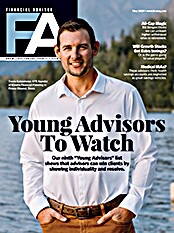Michael Gerber’s book, The E-Myth: Why Most Small Businesses Don’t Work and What to Do About it is a must read for any current or future business owner. At the core of this book is the idea of creating repeatable processes and then identifying who amongst your team is best suited to execute each. That may sound like it takes all the creativity out of owning a business, but rest assured, you will have plenty of time for getting creative with tasks that cannot be systemized.
From here you must embark on the creation of your business plan. If the idea is daunting, get a coach or create a small thinktank of other trusted business owners who have strengths from which you can learn and to hold one another accountable. I can’t stress enough the importance of your support system—choose wisely and only from those whom you admire professionally and trust. SCORE is the nation’s largest network of volunteer, expert business mentors and a wonderful FREE resource. My SCORE mentor helps me with everything from the original outline of a business plan and marketing materials to current HR issues and business decisions such as raising our firm minimum. Who better to mentor you than someone who has successfully run a business of their own?
Be realistic. Your business plan needs to be attainable and will adapt overtime. Just start! Check with your current custodian or broker dealer for helpful business strategy and planning tools specific to our industry. Charles Schwab offers a great outline called Best-Managed Firms: Mastering Strategic Planning. Please don’t go it alone. Identify a bookkeeper, CPA and lawyer who are all experienced with mergers and acquisitions and succession planning.
I’m a huge advocate for including your future team in bi-annual strategic business planning meetings, so keep close records of your strategic business planning documents, charts, research, etc. There’s great value in showing your team what ideas you had from the beginning. This is a great place to get creative—pull out the markers and easel pads! Draw a timeline of your adulthood, mark major events and make sure to note the first time you had the idea of owning your own business and what ensued after. Note how you felt during each milestone.
Next, you must know your numbers. Make sure your personal financial house is in order. Then, you need to develop a close relationship with the firm’s profit and loss statement. If you don’t have access to the full P&L, perhaps request a high-level version that takes accounts for all the programs needed to run the operations, compliance, employee benefits, etc., without showing the full breakdown of dollars spent. Some current firm owners will be hesitant to share numbers, specifically those around compensation, but perhaps if it’s a lump number for total compensation they will be more willing to share. You may also look to benchmark studies for a range, but the more particular, the better.
Just as you do with your clients, you will need to create a plan. What does an emergency fund for this size business look like? What will the down payment be? How will the buy in be funded and over what time period? The team at FP Transitions is another great resource for creating a pathway for internal succession. Checkout their website, blog and books for top notch ideas and case studies.
The path to ownership is not for the faint of heart, but dream big and get to work and the outcome can be marvelous. In closing, one of the greatest honors in owning a successful financial planning firm is helping clients maintain financial freedom while balancing a personal life and feeling great when you lay your head on the pillow at night. If you have a team, watching employees grow in their careers and work hard towards their goals and financial freedom is also greatly rewarding.
Michaela G. Herlihy, CFP, is president of Beacon Financial Planning of Cape Cod Inc.








